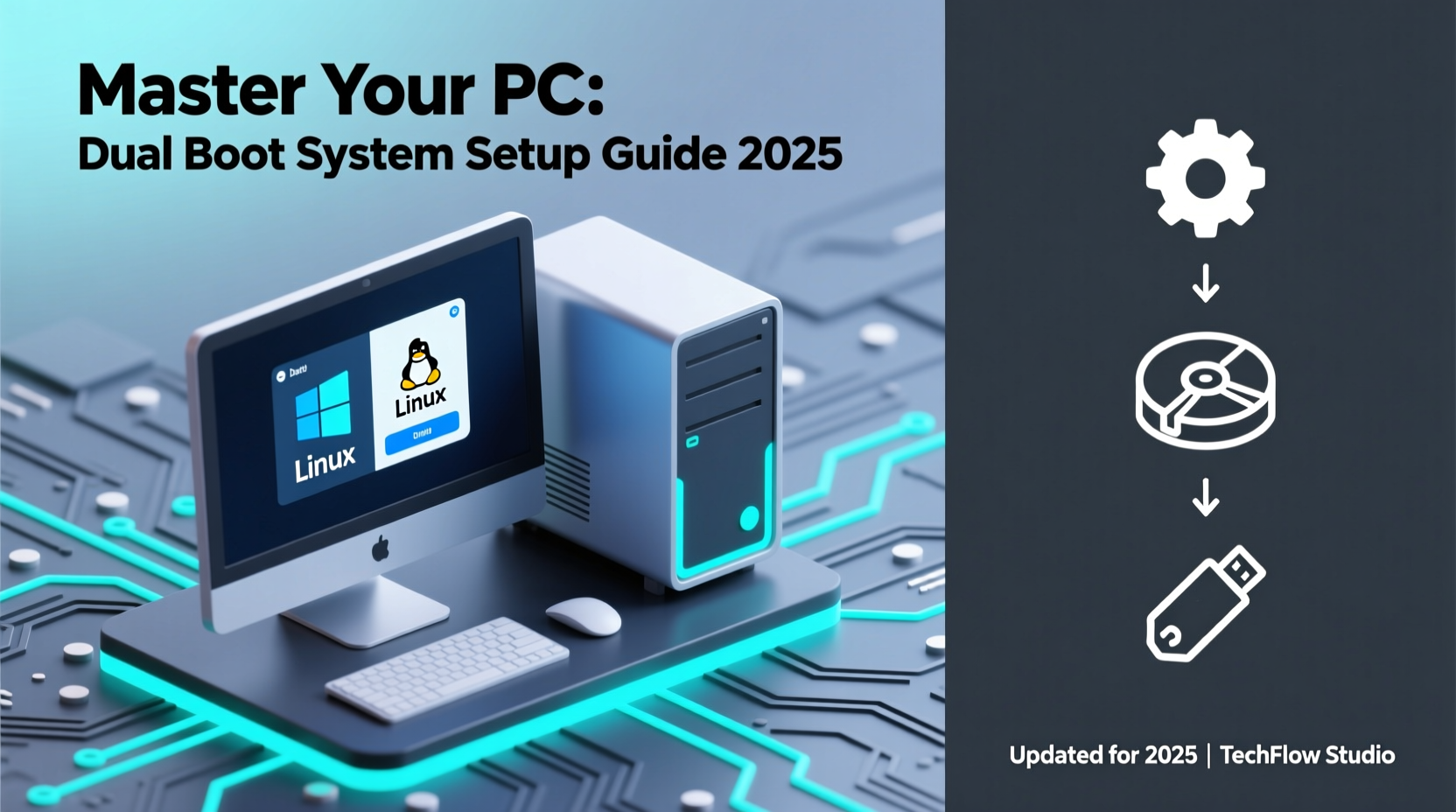This guide will walk you through the process of setting up a dual boot system, which allows you to run two operating systems on one computer. Dual booting is especially useful for users who want to keep both Windows and Linux on their computers to leverage the strengths of each. By the end of this guide, you’ll understand how to partition your hard drive, install a second operating system, and switch between the two systems. Dual boot system and operating system installation are key focuses in this guide.
Introduction
In today's tech-savvy world, many users want the versatility of having more than one operating system on their computer. Setting up a dual boot system enables this, allowing you to benefit from the best features both systems offer without needing additional hardware. Whether you're a developer who needs Linux for stability and Windows for other software, or a user who likes to switch between operating systems, dual booting is the perfect solution. This setup enhances flexibility and productivity, making it essential for tech enthusiasts and professionals alike. To ensure seamless operation, following a detailed setup guide is crucial for optimal performance and safety. This article will take you through the necessary steps to successfully set up a dual boot system.
Step-by-step Operation Guide
1. Backup Your Data
- Before starting, ensure all important data is backed up to an external drive or cloud storage.
2. Partition Your Hard Drive
- Open the Disk Management tool on Windows: Press Win + X and select "Disk Management".
- Select the drive you want to partition and right-click it.
- Choose "Shrink Volume" and enter the amount of space to shrink (e.g., 20000 MB for 20 GB).
- Press "Shrink" to create unallocated space for the new OS.
3. Download the Second Operating System
- Download the Linux ISO file from a trusted source (e.g., Ubuntu official website).
4. Create a Bootable USB Drive
- Use a tool like Rufus to create a bootable USB stick with the Linux ISO.
- Insert your USB device and open Rufus.
- Select the USB device, choose the ISO file, and press "Start" to create the bootable drive.
5. Install the Second Operating System
- Reboot the computer and press the boot key (F12, F2, ESC depending on your computer) to enter the boot menu.
- Select the USB drive as the boot device.
- Once Linux boots, select "Install Linux" and follow the on-screen instructions.
- When prompted, choose the "Install alongside Windows" option.
6. Configure the Dual Boot
- After installation, reboot the system.
- The GRUB menu should appear, allowing you to choose between Linux and Windows.
FAQs
- Q: Can I remove one of the operating systems later?
A: Yes, you can remove an OS by deleting its partition and restoring the boot loader. - Q: Will dual booting slow down my computer?
A: Dual booting itself doesn't slow down performance but managing two systems can be resource-intensive. - Q: How do I update GRUB bootloader?
A: You can update GRUB in Linux by running `sudo update-grub` in Terminal. - Q: Can I dual boot using an external hard drive?
A: Yes, it's possible if your BIOS/UEFI supports booting from external devices. - Q: Is there a security risk with dual booting?
A: Ensure both systems are regularly updated to mitigate security risks.
Safety Precautions
- Ensure all critical data is backed up before partitioning or installing a new OS.
- Double-check partition sizes and locations to avoid accidental data loss.
- Always download operating systems from official or trusted sources.
Comparison Tables
Pros and Cons of Dual Booting
| Pros | Cons |
|---|---|
| Flexibility to use the best applications from both OSes | Requires more hard drive space |
| No need for additional hardware | Potential for OS incompatibility issues |
Windows vs. Linux for Different Uses
| Category | Windows | Linux |
|---|---|---|
| Gaming | High compatibility with major games | Limited support for some games |
| Development | Great for .NET, but limited environments | Rich environment support for diverse programming languages |
In conclusion, setting up a dual boot system lets you take advantage of the strengths of both operating systems, providing flexibility and resource optimization. By following the steps outlined, you can ensure a successful installation and enjoy the benefits of a dual boot system without compromising your data's safety.











 浙公网安备
33010002000092号
浙公网安备
33010002000092号 浙B2-20120091-4
浙B2-20120091-4